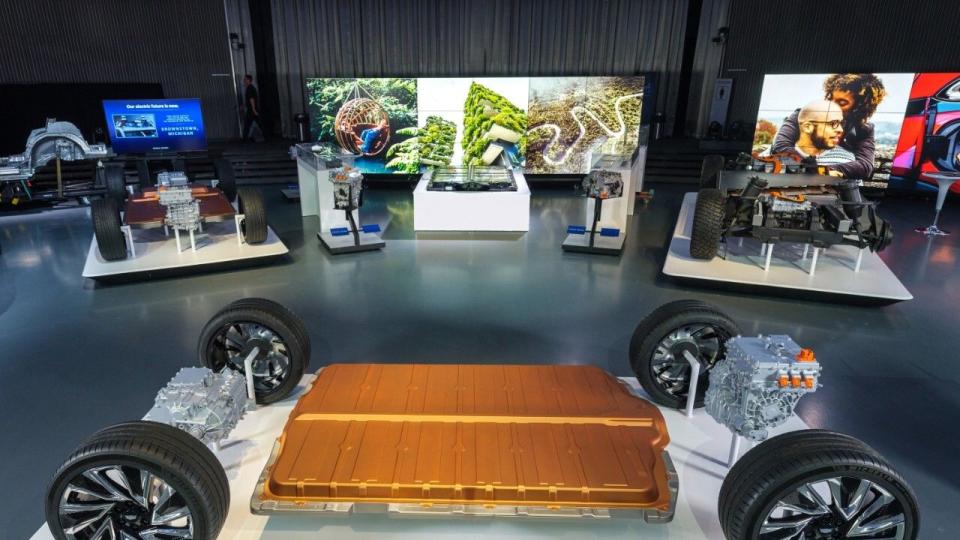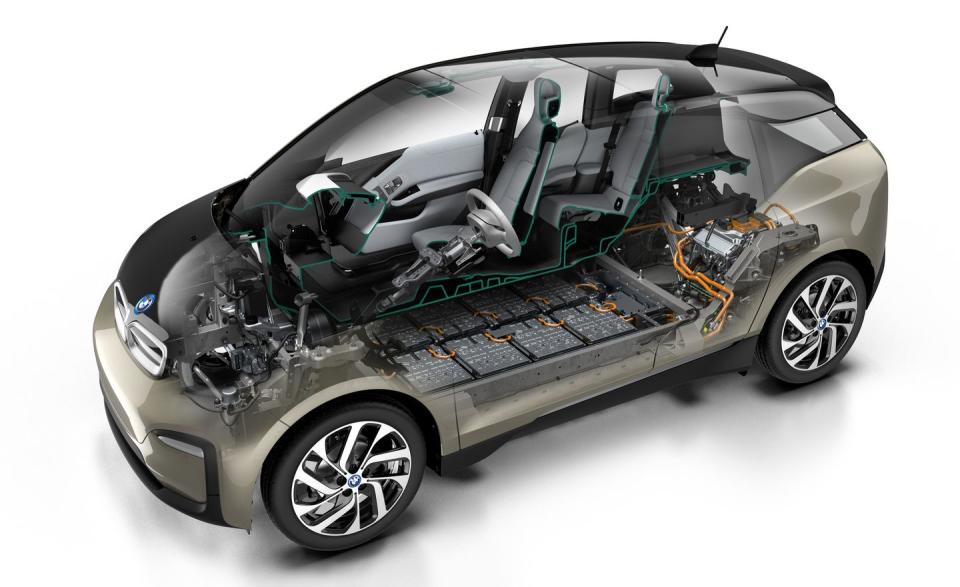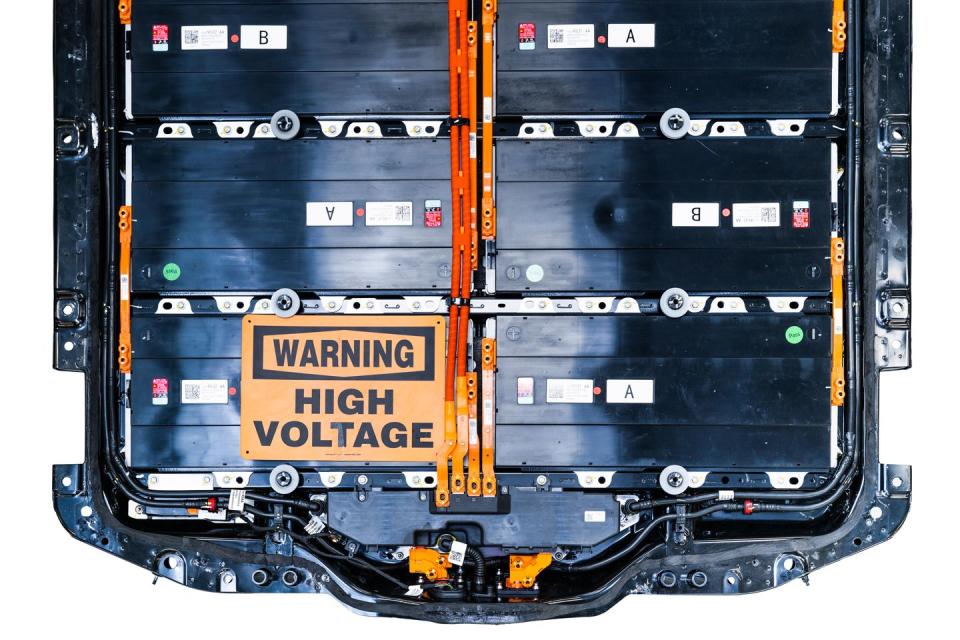Electric-Vehicle Battery Basics

Picture a battery. It's likely you're envisioning a standard-format AA or AAA cell, the kind you buy to power various small electric devices, such as your television's remote control or a smoke detector.
Now, picture the battery of an electric vehicle. The image you've conjured likely looks more like a big rectangle rather than a small cylinder.
Though your mind may perceive these two types of batteries as vastly different electricity-storing devices, both the typical store-bought battery for your various electronic devices and the battery pack in an EV work on the same general principles. That said, the battery in a hybrid or electric vehicle is just a bit more complicated than those lipstick-like cells you're used to handling.
The battery in an HEV, PHEV, or BEV (that's hybrid-electric vehicle, plug-in hybrid-electric vehicle, and battery-electric vehicle, respectively) can be made out of a variety of materials, each of which nets different performance characteristics. The individual cells stored within these big battery packs come in many different shapes and sizes too.

How Does an EV Battery Work?
The cells within an electric vehicle's battery pack each have an anode (the negative electrode) and a cathode (the positive electrode), both of which are separated by a plastic-like material. When the positive and negative terminals are connected (think of switching on a flashlight), ions travel between the two electrodes through a liquid electrolyte inside the cell. The electrons these electrodes give off, meanwhile, pass through the wire outside the cell.
If the battery is providing power (for instance, the bulb in the aforementioned flashlight)— an action known as discharging—then ions flow through the separator from the anode to the cathode, while electrons travel over the wire from the negative (anode) to the positive (cathode) terminal to provide power to an external load. Over time, the cell's energy depletes as it drives whatever it's powering.
When the cell is charged, however, electrons flow from an outside energy source in the other direction (from positive to negative) and the process reverses: electrons flow from the cathode back to the anode, increasing the cell's energy again.
EV Battery Construction
When you think of those aforementioned AA or AAA batteries, you're imagining a single battery cell. But the batteries in EVs aren't a huge version of that single cell. Instead, they're made up of hundreds, if not thousands, of individual cells, usually grouped together into modules. Up to several dozen modules can reside within a battery pack, which is the complete EV battery.
EV cells may be small cylindrical cells, like a AA or AAA cell, of various standardized dimensions. This is the approach Tesla, Rivian, Lucid, and some other automakers take, wiring together thousands of these small cells. The advantage, these companies claim, is that small cells are far cheaper to produce in volume. Still, Tesla plans to move to lower numbers of larger cylindrical cells to reduce the number of connections within their cars' battery packs.

But EV cells come in two other formats: prismatic (rigid and rectangular) or pouch (also rectangular, but in a soft aluminum case that allows some expansion in the cell walls under extreme heat). There are few standardized prismatic- or pouch-cell dimensions, and most carmakers—General Motors and Ford, for example—spec their own in partnership with the cell manufacturer, such as China's CATL, Japan's Panasonic, or Korea's LG Chem.
Types of EV Batteries
The chemistry of an electric vehicle's battery—or the materials used in its cathode—varies among different cell types. Today, there are essentially two types of battery chemistry, both under the umbrella of lithium-ion, meaning their cathodes use lithium along with other metals.

The Two Types of Lithium-Ion Batteries
The first, most common in North America and Europe, uses a blend of either nickel, manganese, and cobalt (NMC) or nickel, manganese, cobalt, and aluminum (NMCA).

 Yahoo Autos
Yahoo Autos 